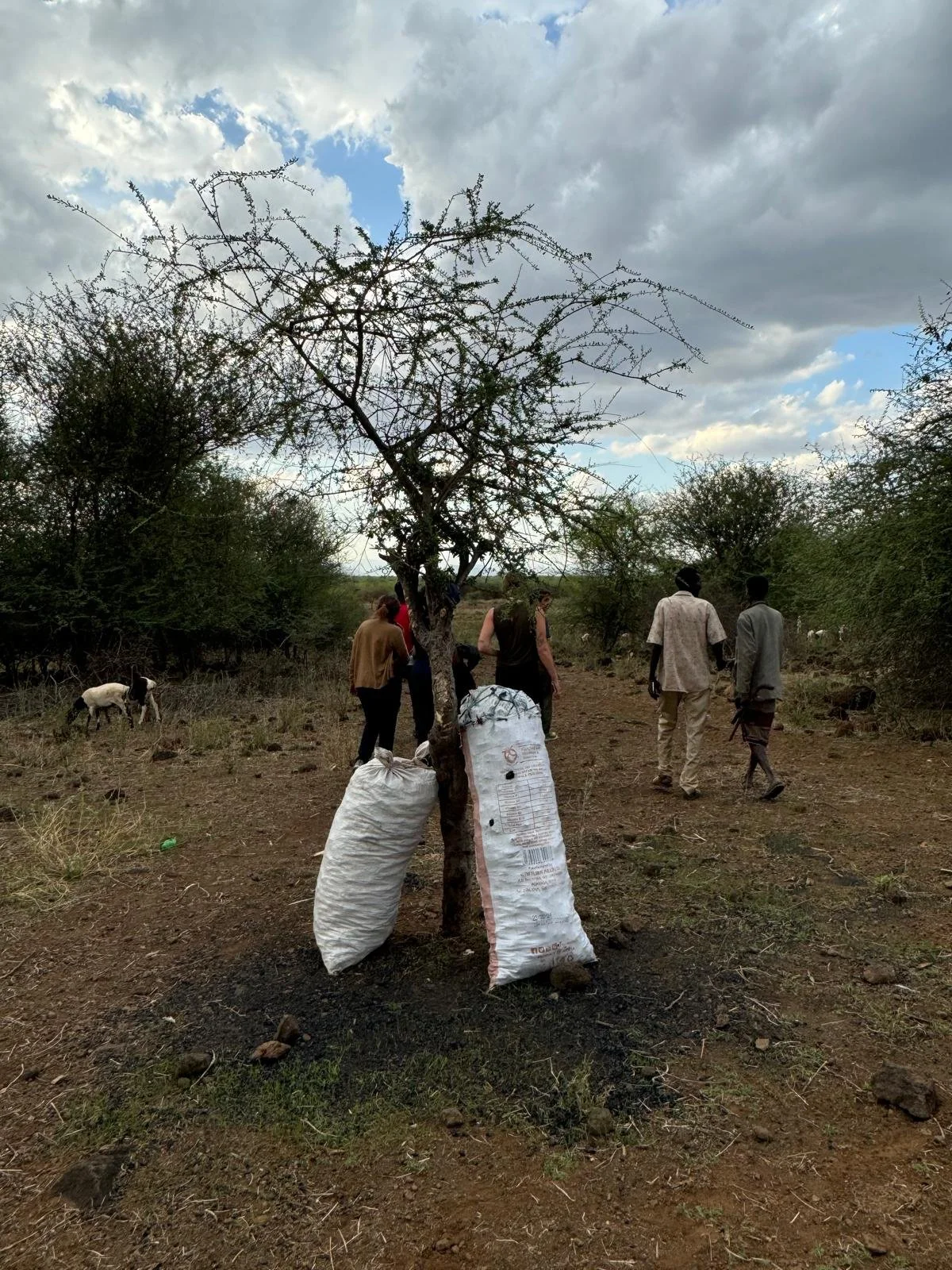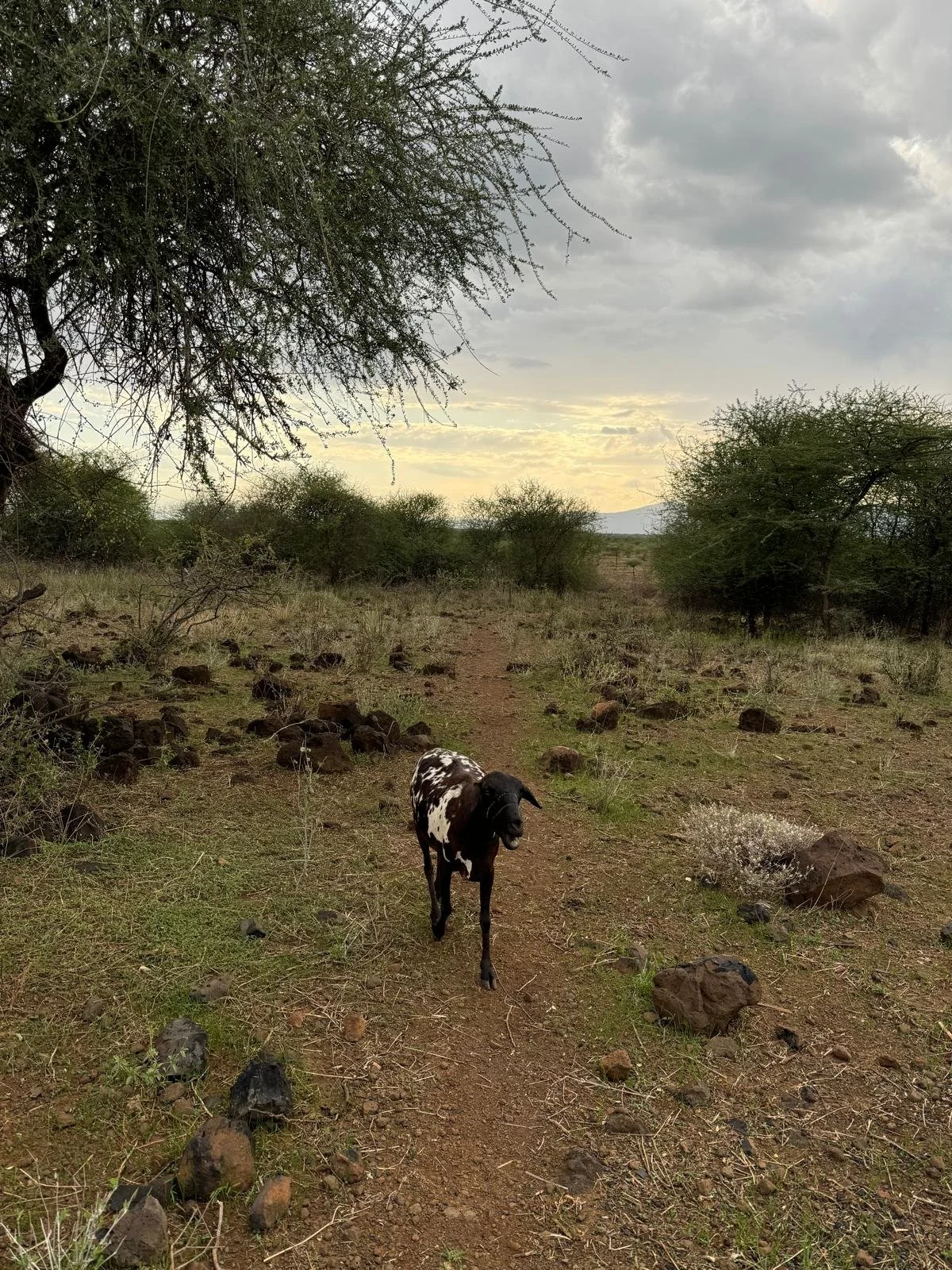Unlocking the Potential of Wild Commodities: Leveraging Gum Arabic for Community-Led Restoration and Livelihoods Empowerment
In recent years, regenerative agriculture—an approach to food production that restores and enhances ecosystem services—has been rapidly gaining momentum. While often associated with reforestation or sustainable agricultural practices like agroforestry, another powerful yet overlooked approach is taking shape: the sourcing of wild commodities. These naturally occurring products are harvested without farming, often from biodiverse, largely undisturbed landscapes. Gum arabic, for instance, is a resin harvested from wild acacia trees used in everything from soft drinks to pharmaceuticals and construction materials.
Though commonly associated with standing forests—defined as areas with more than 10% canopy cover—wild commodities can also be sourced from dryland forests and savannah ecosystems, like those found in Kenya’s arid and semi-arid lands (ASALs). In these contexts, wild harvesting creates high-value, low-intensity value chains—where products command strong market prices yet exert minimal impact on the environment. This model offers a powerful yet often overlooked pathway to regeneration—anchored not in cultivation, but in conservation.
Nature’s Supply Chain: Why Should We Care About Wild Commodities?
Take gum arabic, for example. When harvested using sustainable, non-destructive techniques like hand-tapping—unlike in many other agricultural systems, where trees are eventually cut down or depleted—acacia trees remain healthy and intact. This allows them to continue providing vital ecological services while supporting local livelihoods and offering strong incentives for conservation. In this way, gum arabic value-chains offer not only economic resilience, but also a practical strategy for protecting and regenerating dryland ecosystems.
Acacias offer a suite of agroecological benefits, especially in ASALs. Their seasonal foliage provides shade in the dry season and light penetration in the wet, while nutrient-rich leaf litter enriches the soil and supports surrounding vegetation. They supply forage for livestock, nectar for bees, and foster microhabitats for grasses. With deep roots that stabilize soil, reduce erosion, and enhance water retention—and a natural ability to fix nitrogen—acacias help combat desertification and restore degraded land. These trees are also remarkably resilient—tolerant to fire, resistant to termites, and capable of regenerating naturally by seeds dispersing through browsing animals.
The environmental promise of wild commodity models is matched by their social impact. When harvesting models support both protecting nature and making money, they help create jobs that also benefit conservation. Indigenous peoples—who already protect more than 50% of the world’s remaining ecologically intact lands—are central to these efforts. Acknowledging indigenous peoples’ contributions to environmental stewardship and providing them with financial benefits for their role, not only honour their knowledge and rights but also strengthen ecosystem health and community resilience alike.
Beyond their ecological and social value, wild commodities offer significant commercial potential. Industries ranging from food and pharmaceuticals to cosmetics, fashion, and construction can integrate these ingredients into supply chains—unlocking regenerative sourcing models that combine sustainability with business resilience, whilst also offering a unique selling point for products and a more diverse product range.
Kenya’s ASAL region where Acacia EPZ is based. Source: Regeneration.
The Problem: Unlocking Rural Value and Bridging Market Gaps
Whilst demand for some wild commodities like gum arabic is increasing—as corporates begin to realise its applications and benefits—many indigenous and local communities face challenges in sustainable gum harvesting:
Low Awareness: Despite living among acacia woodlands, many community members remain unaware of gum arabic, its uses across industries, or how to harvest it in a sustainable and commercially viable way.
Fragmented Networks: Communities are often dispersed across vast, arid landscapes, making coordination for collection and trade logistically difficult. Without organized systems or infrastructure, the supply chain remains fragmented and inefficient.
Lack of Economic Incentives: Crucially, there are a lack of economic models that make gum arabic harvesting a competitive alternative to other livelihoods. In turn, communities are often driven to lucrative but extractive activities, such as sand harvesting and logging for charcoal burning.
Collectors harvest gum arabic from wild acacia trees through sustainable hand tapping methods before collecting it in large bags to take to collection hubs where it is sorted into grades. Source: Regeneration.
A Case Study: Acacia EPZ as a Model for Scaling Sustainable Gum Collection
Context
Kenya’s ASALs—where native acacias thrive—cover about 89% of the country and are home to approximately 16 million people. The populations in these regions are often marginalized, facing challenges such as high poverty rates, food insecurity, and vulnerability to climate shocks. These regions are largely inhabited by Indigenous communities—including the Rendille, Borana and Samburu—mainly pastoralists whose livelihoods are closely tied to the dryland landscape. Over generations, the communities have cultivated a deep, intuitive understanding of seasonal patterns, knowing when the rains will shift, enabling them to harvest gum arabic at the optimal time for maximum yield, while preserving the acacia trees and the surrounding ecosystem.
To unlock the value of wild commodities and regenerate regions like the ASALs, Regeneration’s Markets Readiness and Technical Assistance (MRTA) Facility has been partnering with Acacia EPZ to build and scale competitive and impactful value chains for sustainable gum collection.
Business Model
Acacia collaborates with indigenous communities across Kenya’s ASALs, training them to sustainably tap and sort gum arabic from acacia trees using traditional knowledge and hand tools, before exporting high-grade product to Europe’s food industry. While many members of the community were not previously aware of the commercial value of acacia trees, their understanding of local ecosystems and proximity to acacias has positioned them well to be introduced to sustainable gum harvesting. Acacia EPZ builds on their foundational knowledge by introducing new skills, supporting market access, and creating an inclusive business model that transforms environmental stewardship into a source of income and resilience.
Training and Capacity Building: Acacia EPZ equips and trains over 8,000 gum collectors in Kenya’s ASALs, training them to sustainably tap gum arabic using hand tools—preserving trees, ensuring long-term resource availability and creating jobs for local communities.
Community Sorting Hubs: Gathered gum is sorted by grade at local hubs, where collectors receive fair compensation—either in cash or discounted food supplies—ensuring access to essential resources while fostering financial independence in underserved areas. Collectors exercise their agency by organising themselves and negotiating in pursuit of their interest.
Tapping the Global Market: Acacia EPZ processes gum arabic through quality testing, emulsification, crushing, grading and packaging, before being exported to key markets like Europe. With Sudan—currently supplying around 70% of the global market—facing disruptions due to ongoing conflict, there is an opportunity for Kenya to help stabilize supply by increasing its own exports. Thanks to the high viscosity and quality of its gum arabic, Kenya is well-positioned to meet rising demand. Acacia EPZ is leveraging this opportunity, in a global market valued at $1.1 billion (2023) and growing at 7.2% annually.
Leveraging Gum for Green: Acacia promotes sustainable harvesting by encouraging gum tapping with hand tools to protect trees. It distributes seed balls to support reforestation and builds partnerships for tree planting initiatives. It also helps manage invasive Prosopis trees by harvesting them for charcoal production—reducing their spread, lowering tree density, and protecting native ecosystems from being overtaken.
Gum arabic harvesting is unlocking income opportunities in Kenya’s drylands, boosting household earnings and improving access to essentials like food, education and health care. In regions vulnerable to climate shocks, this income is a critical buffer, complementing pastoral livelihoods and offering a form of stability during periods of drought or livestock loss. One Samburu collector from Isiolo shared that she now uses her weekly gum proceeds to pay her daughter’s school fees and contribute to household needs.
The Revolving Fund
Over the last couple years, MRTA has been working with Acacia EPZ to strengthen its community-led model—enhancing financial inclusion and incentivising sustainable land restoration. A key innovation towards this effort has been the introduction of a Revolving Fund.
So how does this work? Acacia EPZ offers a bonus of 10 KES per kg of harvested gum to collector groups, creating a performance-based incentive that rewards productivity. These bonus payments are pooled into a communal fund, which is owned and managed by the collector groups themselves.
Members can apply for small loans from the fund to help ease cash flow, cover urgent needs like healthcare or school fees, or support small-scale investments. As repayments are made, the capital is returned to the fund, ready to be used again. This cyclical model enables communities to continually reinvest in their own well-being—building resilience and financial autonomy over time.
The Impact
Financial Inclusion: Many Indigenous communities lack access to banking and credit, limiting their ability to make essential one-time investments—such as upfront education costs. Expanding this model ensures financial accessibility and economic stability.
Female Empowerment: By granting women direct access to finance, the fund enables them to make independent decisions, secure financial freedom, and participate more actively in economic activities.
Incentives for Restoration: Tying financial benefits to responsible gum tapping encourages sustainable practices that protect acacia trees, ensuring long-term environmental and economic viability.
Sustainable Growth: With profits reinvested, the fund remains evergreen—recycling resources to expand access and support more people over time.
MRTA’s Role
MRTA has played a vital role in helping Acacia EPZ expand and strengthen its revolving fund model. By working closely with local financial institutions, MRTA has enabled collector groups—many of whom previously relied on informal savings—to open formal bank accounts. It has also supported the rollout of decentralised banking agents in local shops, improving day-to-day access to financial services in remote areas. In parallel, MRTA has been active in bringing new partners to the table, helping to co-finance the fund and boost its liquidity. These combined efforts have allowed collector groups to scale up their gum harvesting operations with greater confidence and financial security.
Acacia EPZ’s collectors harvest gum arabic alongside other livelihoods like pastoral farming. Source: Regeneration.
Conclusion: Resilient Landscapes, Empowered People
Wild commodities can be leveraged to empower Indigenous and marginalised communities while driving land restoration. As stewards of ecologically intact landscapes, these communities possess vital knowledge for regeneration. By integrating sustainable harvesting into business models, they gain economic resilience while preserving their way of life. Scaling initiatives like Acacia EPZ showcase how community action, fair compensation, market access and financial inclusion improve livelihoods, incentivise conservation, and promote long-term environmental and social well-being. Through Acacia EPZ’s model, local communities begin to engage with their environment in new ways—transforming untapped natural potential into sustainable, community-driven enterprises.



